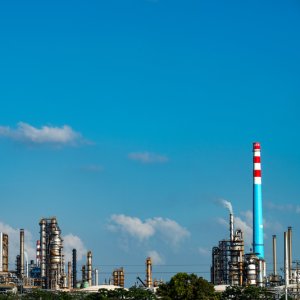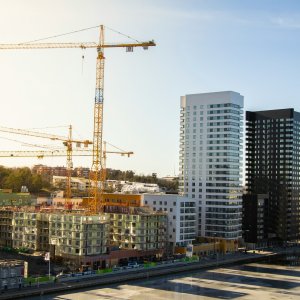
Has COVID-19 Condemned Dos Bocas?
 By Peter Appleby | Journalist and Industry Analyst -
Thu, 05/28/2020 - 12:30
By Peter Appleby | Journalist and Industry Analyst -
Thu, 05/28/2020 - 12:30
President Andrés Manuel López Obrador has bet on the multi-billion-dollar Dos Bocas refinery as one of the three major public works that will define his premiership. The refinery has been criticized since its conception as being poorly located and unnecessary. Today, Bloomberg reports that the arrival of COVID-19 will “hasten the demise” of refineries around the world.
The demand destruction that Mexico has suffered from the pandemic has been dramatic. A drop in road traffic has seen retail sales drop by as much as 70 percent in March, according to ONEXPO, while PEMEX’s April retail sales volumes fell to levels not seen since 1990, El Economista reports. Mexico’s aviation industry has suffered too, with a massive drop off in commercial flights meaning lower fuel requirements. This led PEMEX’s international trading arm, PMI, to invoke force majeure against imports in April, stranding tens of fuel-laden vessels of the country’s coasts.
While current fuel demand in Mexico is low, the future outlook is also unsure. Rystad Energy’s Latin America VP Schreiner Parker told Mexico Oil and Gas Review recently that 2020 would see a “sluggish” rising demand in 2020, while “long-term oil demand does not get back on its structural track until 2023”.
Shell, one of the world’s major IOCs, is also predicting a more complicated future for future oil demand. At the end of April, Shell CEO Ben Van Beurden told Bloomberg that it was “hard to say” if demand would ever reach pre-COVID-19 levels. He added that the pandemic had made it more likely that peak oil would be seen this decade.
These developments have put the decision to construct the Dos Bocas refinery under renewed focus. Dos Bocas will be the seventh refinery in Mexico’s National Refinery System (SNR), which currently operates at below 50 percent capacity. Though investments and improvements are being made to the SNR, the reasons behind building a new, larger refinery, have been questioned. Last year, Concepción de la Garza, director of Golfo Suplemento Latino, a company that has been providing services to the SNR, told Mexico Oil and Gas Review that “working in the refineries has been complicated over the last two years. The five refineries we are working at are operating at an average of 30 percent capacity. There is no activity at all in Madero nor Minatitlan.”
Before the Dos Bocas construction began, the government predicted it would cost US$8 billion and take three years to build. Many experts questioned the conservative budget forecast and the very rapid pace of construction given the size of the project. Now, costs appear to be mounting. “Rystad Energy is hearing numbers like US$12 billion to US$13 billion for the construction, rather than the original US$8 billion,” Schreiner Parker told Mexico Oil and Gas Review, adding that “the rationale behind that is still opaque to any outside observer and, from a purely economic standpoint, the project seems unlikely to be viable.”
The Mexican government says that the refinery is needed to reduce the country’s reliance on refiners in other countries. At the moment, Mexico sends its heavy crude to the United States to buy it back as refined product. Certainly, the ability to refine crude in-country would strengthen the country’s energy security and progress towards the energy sovereignty that AMLO so desires.
But production must increase for there to be crude to refine and COVID-19 has dealt a blow to the administration’s 2.6MMb/d goal for 2024 too. PEMEX has seen a small increase in production recently to 1.75MMb/d, and in 1Q20 announced five new discoveries. However, the cost of production also rose by 2.4 percent in 2019 and historic quarterly losses and well shut-ins are likely to hamper its ability to continue pushing production skywards.
Worldwide budget cuts for operators will also mean that companies are less inclined to invest beyond their commitments. Issues like the Zama dispute between Talos Energy and PEMEX do not foster a pro-business environment. However, as Parker pointed out to Mexico Oil and Gas Review, “the problems of a difficult NOC or an onerous government are forgotten by IOCs if the size of the prize is big enough.” He added: “If we begin to see major discoveries in Mexico, then attractiveness rises dramatically. At the moment, organic investment opportunities are being shut down because there are no new bid rounds […] countries including Brazil – and the standout regional opportunity, Guyana – are now competing for dollars.”
According to Bloomberg, low demand and higher crude costs mean that some of the refineries that have temporarily closed in Europe and North America may be “permanently shuttered.” Mexico is undoubtedly behind Europe in developing accessible renewable energies and recent CFE and CONACE actions have not helped enhance the development of a green future for the country. But as Spencer Welsh, IHS Markit VP of oil markets and downstream consulting told Bloomberg about refinery closures, “the COVID-19 situation has accelerated the rationalization process that was always coming.”
When the Dos Bocas refinery is completed in May 2022, it will begin operation in a world utterly different to the one it thought up in. Only then will we know if President López Obrador’s bet was a smart one.
















